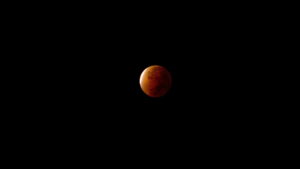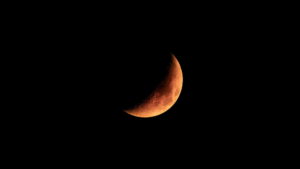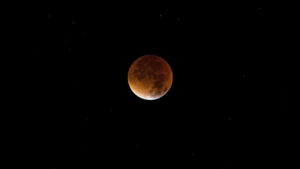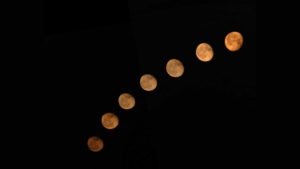The lunar eclipse of 2024, which is the first eclipse of this year, is about to occur with its spectacular visibility in a lot of regions of the world. This penumbral lunar eclipse will light up in the sky on Monday.
The moon will be a bit darker than usual; however, the phenomena would be subtle and said to be witnessed normally at night.
March lunar eclipse would be like gentle shading across the moon, almost like a gradual dimming from one side to the other. It would be a bare minimum for this eclipse and there would not be a significant, dramatic change.
Those who are on Earth’s night side will be the only ones able to see the first lunar eclipse during this occurrence. This covers continents such as Australia, Africa, North and East Asia, Europe, North America, and South America.
A penumbral eclipse might not be as visually noticeable as a total lunar eclipse because of its less strong color. Some special tools, such as the viewing glasses needed for solar eclipses, are not necessary.
The moon gets covered by the Earth’s lighter outer shadow during a penumbral lunar eclipse or March lunar eclipse, making it more difficult to see.
There is a science behind this phenomenon and it is one of the important celestial events.
When the Earth passes in front of the sun and moon during a lunar eclipse, the moon’s surface is shadowed. Seeing this occurrence of a worm moon lunar eclipse is fascinating because it can only occur with a full moon.
The moon moves from the darkest area of the shadow, known as the umbra, to the lighter outer shadow, known as the penumbra, marking the end of the partial eclipse phase.
The first lunar eclipse becomes about 10% less luminous than usual during the eclipse.
Because of a particular configuration of the sun, Earth, and moon, lunar and solar eclipses frequently happen in pairs.
The Earth’s shadow partially blocks the full moon during a penumbral eclipse. But the circumstances for a solar eclipse will be set by the approaching new moon phase.
Lunar eclipse of 2024: Understanding Penumbral Lunar Eclipse

One kind of lunar eclipse is the penumbral eclipse. The total lunar eclipse and the partial lunar eclipse are the other two.
In the Worm Moon lunar eclipse, the moon is performing a penumbral lunar eclipse as a warm-up performance before the main event when it completely covers the sun. This is the result of the Earth passing in front of the sun and moon, shading the moon’s surface. It resembles a shadow-based video game in space!
NASA scientist Noah Petro claims that shadows are everything. As the Earth is illuminated by the sun, a lengthy shadow is sent into space. The moon will occasionally stray into this shadow, producing an eclipse.
In the March lunar eclipse or worm moon lunar eclipse, this penumbral eclipse will cause the moon to appear somewhat darker when it passes through the outermost portion of Earth’s shadow. Although it’s not as spectacular as a total eclipse, it’s still worthwhile to observe!

On the nightside of Earth, everyone may watch lunar eclipses, unlike solar eclipses, which are visible only from certain locations. The entire lunar surface is shadowed by the Earth because of how large the Earth is to the moon.
The lunar eclipse of 2024 is one of the many phenomena that will happen this year in space. this marks the first lunar eclipse and there will be solar eclipses, moon eclipses, and many more.
the enthusiast of outer space and its exploration can enjoy this incredible masterpiece as it holds its own importance.
Did you see the Lunar Eclipse of 2024 in your country?













